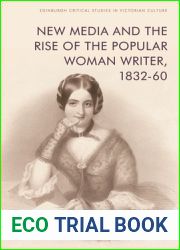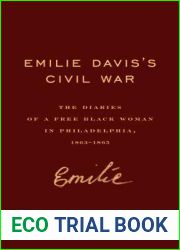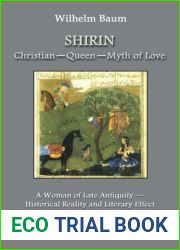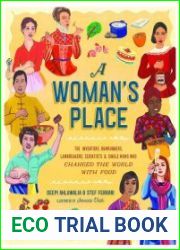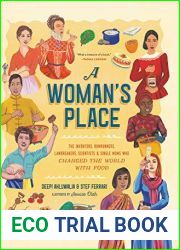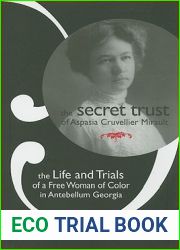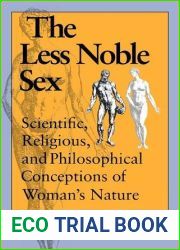
BOOKS - Performing Femininity: Woman as Performer in Early Russian Cinema (KINO - The...

Performing Femininity: Woman as Performer in Early Russian Cinema (KINO - The Russian and Soviet Cinema)
Author: Rachel Morley
Year: December 30, 2016
Format: PDF
File size: PDF 21 MB
Language: English

Year: December 30, 2016
Format: PDF
File size: PDF 21 MB
Language: English

Rachel Morley, the author, examines how female characters were utilized by early Russian filmmakers to investigate shifting notions of femininity and the rise of the so-called "New Woman" while also testing the limits of cinematic technology and developing a unique cinematic vocabulary. From the first feature film, Romashkov's Stenka Razin (1908), to the sophisticated melodramas of the 1910s, and up to Viskovsky's The Last Tango (1918), made just before the pre-revolutionary film industry was disbanded by the new Soviet government, the female performer remained central to the story. Morley argues that the character of the female performer allowed filmmakers to explore key contemporary issues such as changing conceptions of femininity and gender identity. Through this archetype of femininity, filmmakers experimented with cinematic technology and developed a specific language of cinema.
Рейчел Морли, автор, исследует, как женские персонажи использовались ранними российскими кинематографистами для исследования меняющихся представлений о женственности и возвышении так называемой «Новой женщины», а также проверяет пределы кинематографических технологий и разрабатывает уникальную кинематографическую лексику. От первого художественного фильма, ромашковского «Стеньки Разина» (1908), до изощренных мелодрам 1910-х годов и вплоть до «Последнего танго» (1918) Висковского, сделанного как раз перед тем, как дореволюционная киноиндустрия была распущена новой советской властью, женщина-исполнительница оставалась центральной в истории. Морли утверждает, что характер исполнительницы женской роли позволил кинематографистам исследовать ключевые современные проблемы, такие как изменение концепций женственности и гендерной идентичности. Через этот архетип женственности кинематографисты экспериментировали с кинематографическими технологиями и выработали специфический язык кино.
Rachel Morley, auteure, explore comment les personnages féminins ont été utilisés par les premiers cinéastes russes pour explorer l'évolution de la féminité et de l'ascension de la soi-disant « Nouvelle Femme », ainsi que pour tester les limites de la technologie cinématographique et développer un vocabulaire cinématographique unique. Du premier film d'art, « Stenka Razin » (1908), aux mélodrames sophistiqués des années 1910, jusqu'au « Dernier Tango » (1918) de Viskovsky, fait juste avant que l'industrie cinématographique pré-révolutionnaire ne soit dissoute par le nouveau pouvoir soviétique, la femme interprète est restée centrale dans l'histoire. Morley affirme que la nature de l'interprète du rôle féminin a permis aux cinéastes d'explorer les principaux problèmes contemporains, tels que le changement des concepts de féminité et d'identité de genre. Grâce à cet archétype de la féminité, les cinéastes ont expérimenté les technologies cinématographiques et développé un langage cinématographique spécifique.
Rachel Morley, autora, explora cómo los personajes femeninos fueron utilizados por las primeras cineastas rusas para investigar las cambiantes ideas sobre la feminidad y la exaltación de la llamada «Nueva Mujer», además de poner a prueba los límites de la tecnología cinematográfica y desarrollar un vocabulario cinematográfico único. Desde el primer largometraje, «Stenki Razina» (1908), hasta los sofisticados melodramas de la década de 1910 y hasta «último tango» (1918) de Viskovsky, realizado justo antes de que la industria cinematográfica prerrevolucionaria fuera disuelta por el nuevo gobierno soviético, la intérprete femenina siguió siendo central en la historia. Morley sostiene que el carácter de la intérprete de un papel femenino ha permitido a las cineastas explorar temas contemporáneos clave, como el cambio en los conceptos de feminidad e identidad de género. A través de este arquetipo de feminidad, los cineastas experimentaron con la tecnología cinematográfica y desarrollaron un lenguaje de cine específico.
Rachel Morley, autora, explora como personagens femininos foram usados por cineastas russas iniciais para explorar as percepções em evolução sobre a feminilidade e a ascensão da chamada «Nova Mulher», além de testar os limites da tecnologia cinematográfica e desenvolver um vocabulário cinematográfico único. Do primeiro filme de arte, «Stenka Razin» (1908), à melodrama sofisticada da década de 1910, até «O último tango» (1918), de Viscovsky, feito antes de a indústria cinematográfica pré-revolucionária ser dissolvida pelo novo poder soviético, a artista feminina permaneceu central na história. Morley afirma que a representação feminina permitiu que cineastas explorassem problemas contemporâneos essenciais, como a mudança dos conceitos de feminilidade e identidade de gênero. Através deste arquétipo feminino, os cineastas experimentaram a tecnologia cinematográfica e desenvolveram uma linguagem cinematográfica específica.
Rachel Morley, l'autrice, studia come i personaggi femminili siano stati usati dai primi cinematografi russi per esplorare le concezioni mutevoli della femminilità e dell'ascesa della cosiddetta Nuova Donna, per testare i limiti della tecnologia cinematografica e sviluppare un vocabolario cinematografico unico. Dal primo film d'arte, «Stenka Razin» (1908), alla melodia sofisticata del 1910 fino a «L'ultimo tango» (1918) di Wiskowski, realizzato proprio prima che l'industria cinematografica pre-rivoluzionaria venisse sciolta dal nuovo potere sovietico, la donna artista rimase centrale nella storia. Morley sostiene che la natura del ruolo femminile ha permesso alle cinematografe di esplorare i principali problemi contemporanei, come il cambiamento dei concetti di femminilità e identità di genere. Attraverso questo archetipo di femminilità, le cinematografe hanno sperimentato la tecnologia cinematografica e sviluppato un linguaggio cinematografico specifico.
Rachel Morley, Autorin, untersucht, wie weibliche Charaktere von frühen russischen Filmemachern verwendet wurden, um die sich verändernden Vorstellungen von Weiblichkeit und dem Aufstieg der sogenannten „Neuen Frau“ zu erforschen, und testet die Grenzen der filmischen Technologie und entwickelt ein einzigartiges filmisches Vokabular. Vom ersten Spielfilm, Romashkovskys „Stenka Razin“ (1908), über die ausgeklügelten Melodramen der 1910er Jahre bis hin zu Wiskowskis „Der letzte Tango“ (1918), kurz bevor die vorrevolutionäre Filmindustrie von der neuen Sowjetmacht aufgelöst wurde, blieb die weibliche Darstellerin zentral in der Geschichte. Morley argumentiert, dass der Charakter der weiblichen Darstellerin es den Filmemachern ermöglichte, wichtige zeitgenössische Themen wie die sich verändernden Konzepte von Weiblichkeit und Geschlechtsidentität zu untersuchen. Durch diesen Archetyp der Weiblichkeit experimentierten Filmemacher mit filmischen Technologien und entwickelten eine spezifische Filmsprache.
Rachel Morley, autorka, bada, jak postacie kobiet były wykorzystywane przez wczesnych rosyjskich filmowców do badania zmieniających się pomysłów na temat kobiecości i powstania tzw. „nowej kobiety”, i testuje granice technologii kinowej i rozwija unikalne słownictwo kinowe. Od pierwszego filmu fabularnego, Romaszkowski „Stenki Razin” (1908), do wyrafinowanych melodramatów z 1910 roku do Wiskowskiego „Ostatni tango” (1918), wykonane tuż przed przedrewolucyjnym przemyśle filmowym został rozwiązany przez nowy rząd radziecki, żeński wykonawca pozostał centralnym elementem historii. Morley twierdzi, że charakter kobiecego wykonawcy pozwolił filmowcom na zbadanie kluczowych współczesnych zagadnień, takich jak zmiana pojęć kobiecości i tożsamości płciowej. Poprzez ten archetyp kobiecości filmowcy eksperymentowali z technologią kinową i opracowali specyficzny język kina.
רייצ 'ל מורלי, הסופרת, חוקרת כיצד דמויות נשיות שימשו יוצרות קולנוע רוסיות מוקדמות כדי לחקור רעיונות משתנים לגבי הנשיות ועלייתה של ”האישה החדשה”, ובוחנת את גבולות הטכנולוגיה הקולנועית ומפתחת אוצר מילים קולנועי ייחודי. החל מהסרט העלילתי הראשון, ”סטנקי ראזין” (1908), ועד למלודרמות המתוחכמות של שנות ה-1910 וכלה ב ”הטנגו האחרון” של רומשקובסקי (1918), שנעשה ממש לפני שהתעשייה הקולנועית הפרה-מהפכנית פורקה על ידי הממשלה הסובייטית החדשה, המופיעה נשארה מרכזית בהיסטוריה. מורלי טוענת שדמותה של השחקנית איפשרה ליוצרי סרטים לחקור נושאים עכשוויים כמו שינוי מושגים של נשיות וזהות מגדרית. באמצעות ארכיטיפ זה של נשיות, יוצרי סרטים התנסו בטכנולוגיה קולנועית ופיתחו שפה קולנועית מסוימת.''
Rachel Morley, yazar, kadın karakterlerin erken Rus film yapımcıları tarafından kadınlık ve sözde "Yeni Kadın'ın yükselişi hakkındaki değişen fikirleri keşfetmek için nasıl kullanıldığını araştırıyor ve sinema teknolojisinin sınırlarını test ediyor ve benzersiz sinematik kelime hazinesi geliştiriyor. Romashkovsky'nin "Stenki Razin" (1908) adlı ilk uzun metrajlı filminden, 1910'ların sofistike melodramlarına, devrim öncesi film endüstrisinin yeni Sovyet hükümeti tarafından dağıtılmasından hemen önce yapılan Viskovsky'nin "Son Tango" (1918) filmine kadar, kadın sanatçı tarihin merkezinde kaldı. Morley, kadın oyuncunun karakterinin, film yapımcılarının kadınlık ve cinsiyet kimliği kavramlarını değiştirmek gibi temel çağdaş konuları keşfetmelerine izin verdiğini savunuyor. Bu kadınlık arketipi sayesinde, film yapımcıları sinema teknolojisini denediler ve belirli bir sinema dili geliştirdiler.
راشيل مورلي، الكاتبة، تستكشف كيف تم استخدام الشخصيات النسائية من قبل صانعي الأفلام الروس الأوائل لاستكشاف الأفكار المتغيرة حول الأنوثة وظهور ما يسمى بـ «المرأة الجديدة»، وتختبر حدود التكنولوجيا السينمائية وتطور مفردات سينمائية فريدة. من الفيلم الروائي الأول، «Stenki Razin» لروماشكوفسكي (1908)، إلى الميلودراما المتطورة في عقد 1910 إلى «The t Tango» لفيسكوفسكي (1918)، الذي تم إنتاجه قبل حل صناعة السينما قبل الثورة من قبل الحكومة السوفيتية الجديدة، ظلت المؤدية مركزية إلى التاريخ. تجادل مورلي بأن شخصية الفنانة سمحت لصانعي الأفلام باستكشاف القضايا المعاصرة الرئيسية، مثل تغيير مفاهيم الأنوثة والهوية الجنسية. من خلال هذا النموذج الأصلي للأنوثة، جرب صانعو الأفلام التكنولوجيا السينمائية وطوروا لغة سينمائية محددة.
作者雷切爾·莫利(Rachel Morley)探討了俄羅斯早期電影制片人如何利用女性角色來研究女性氣質和所謂的「新女人」崛起的不斷變化的觀念,並檢查了電影技術的局限性並開發了獨特的電影詞匯。從第一部長片《Romashkovsky》《Stenki Razina》(1908)到1910代精心制作的情節劇,再到維斯科夫斯基的《t Tango》(1918),在革命前的電影業被解散之前由新的蘇維埃政權解散,女演員仍然是歷史的中心。莫利(Morley)認為,女性角色表演者的性格使電影制片人能夠探索當代的關鍵問題,例如改變女性氣質和性別認同的概念。通過這種女性化的原型,電影制片人嘗試了電影技術並開發了一種特定的電影語言。







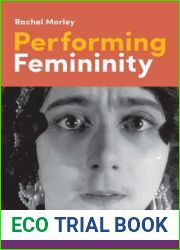



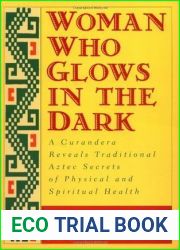

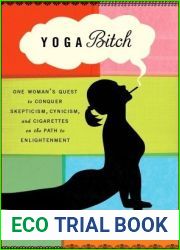

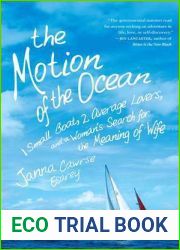
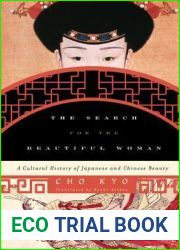

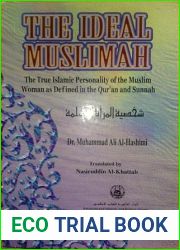
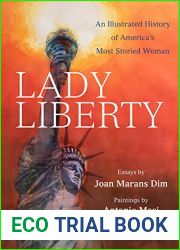





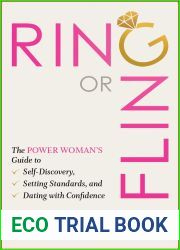
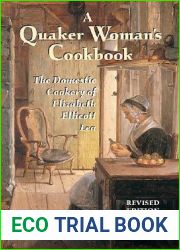
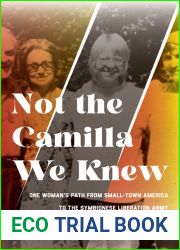


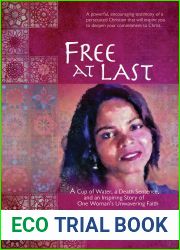



![Wieland|s attitude toward woman and her cultural and social relations, by Matthew G. Bach, PH. D. 1922 [Leather Bound] Wieland|s attitude toward woman and her cultural and social relations, by Matthew G. Bach, PH. D. 1922 [Leather Bound]](https://myecobook.life/img/7/737006_oc.jpg)
